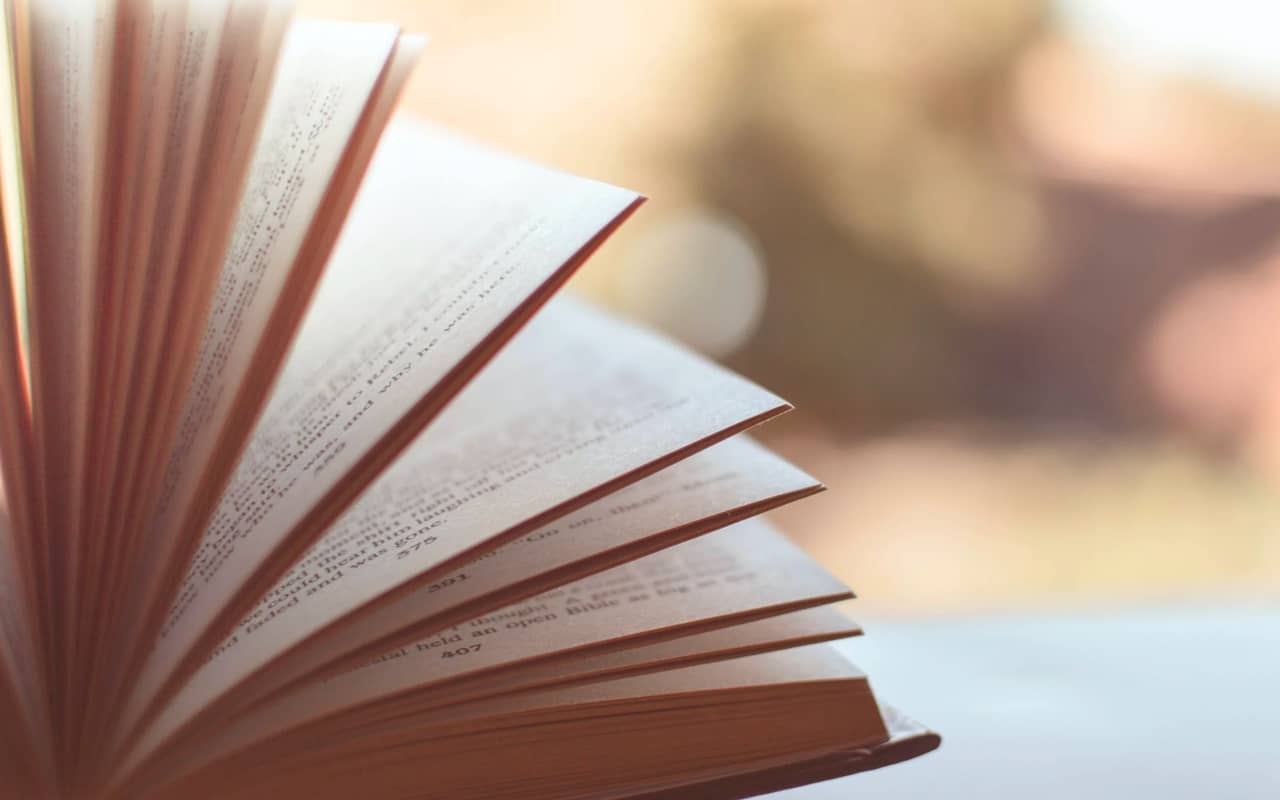Podcast: Download
Subscribe: Apple Podcasts | RSS
 If you’re wondering how to read a book and remember everything, this is one of the most helpful tips I can give:
If you’re wondering how to read a book and remember everything, this is one of the most helpful tips I can give:
Sit down, open a book and read.
So many people dismiss this simple principle. They’re looking for hacks, when research shows that most good readers always cover the fundamentals.
Of course, I have more reading strategies to share than just that. Six incredible steps in total.
But isn’t common sense powerful?
It is.
And common sense is getting even more powerful as modern life get’s more distracting. Your competition on the professional market will always read more thoroughly, after all.
The Basics Of Reading & Remembering
In just a moment, we’ll talk about different types of reading, like elementary, inspectional, analytical, and syntopical reading.
These are terms introduced by Mortimer J. Adler in his famous guide, How to Read a Book.
But these terms are useless if you don’t:
- Schedule time to read
- Read according to demands of the genre
- Read based on clearly established goals
- Show up prepared with the appropriate tools for interpretation and analysis
- Be willing to read books slowly and completely as much as possible
In sum, here’s what matters if you want to know the best way to read: You need to explore multiple ways of reading.
That’s because there are multiple kinds of books.
And when you have a toolbox of strategies at your fingertips, you’ll be able to read faster, remember more and even better:
You’ll understand what you’re reading and become a person of knowledge and wisdom.
You’ll make connections on the fly and experience multiple a-ha moments of revelation.
Sound good?
Let’s get started!
The 4 Main Types of Reading (And Which Is the Best Way to Read a Book)
Before we get started, ask yourself a simple question:
What’s the point of reading?
A lot of people try to imitate how others read. But they wind copying strategies that do not align with their goals.
So reading more thoroughly and choosing a strategy always begins with thinking through your goals.
Some reading goals include:
- Acing school assignments and exams
- Filling in gaps left by traditional education
- Developing personal wisdom
- Solving problems
- Expanding mental awareness
- Substantial reflection
- Identifying or creating opportunities for yourself
- Research as a profession
- Spiritual goals
- Leisure
Each of these categories can involve multiple reading types.
Let’s start with the oft-cited types identified by Adler in How to Read a Book.
I’ll cover Adler’s main points, and after that, we’ll talk about how to read a book like a scholar so you can remember as much as you want.
Why should you care what I have to say about reading?
Well, I have a PhD, two MAs and am an author of many books. Most of those books involve tons of research.
I’ve also taught reading and writing at three universities around the world, including for Rutgers where the legendary Kurt Spellmeyer was my boss.
Oh, and I read every single day, completing 2-5 books a week on average. All kinds of books from fiction to philosophy, science and Zen.
You name the category, and I’ll probably have read something that belongs to it.
And if I haven’t, even if the category is crushingly complex, I’ll figure out a way to increase my IQ in that field to the best of my ability.
All right, enough about my street cred. Let’s get started with Adler’s four main types of reading.
One: Elementary Reading
Adler says that this reading type hardly goes past basic understanding.
You know what the words on a page say, and you can follow a basic plot.
However, I think we need to add a very important point.
Elementary reading is often directed reading.
You’re told to do it by a parent or teacher.
It’s the opposite of self-directed reading.
And that’s a big problem. As the authors of Balancing Principles for Teaching Elementary Reading argue, one core value matters above all.
Teachers and parents should strive to help kids want reading as part of their lives.
Why is a passion for reading so important?
Simple: true literacy demands are only going up as technology and automation increase.
Not only that, but critical thinking is so important to the success of all people.
In fact, there are 9 critical thinking strategies all people need, but if you only have elementary reading skills, you cannot develop them.
And no, you can’t expect so-called microlearning to help fill in the gaps if you’re an elementary reader.
Will inspectional reading get you there?
Let’s see.
Two: Inspectional Reading
For Adler, inspectional reading is what most people now call skim reading.
Adler seems to confuse it with scanning, which is substantially different.
Don’t get me wrong.
There’s nothing wrong with inspectional reading. As the authors of Reading as a Perceptual Process have shown, words can be skipped while scanning a book without the reader necessarily losing comprehension.
However, the most interesting finding in the book is that how much you can still understand while inspecting a book may be linked to handwriting.
For example, they analyse “target scanning,” which is stronger in those with decent handwriting skills.
This means that if you never write by hand and are finding it difficult to grasp the meaning of books you’re skimming through using “speed reading” techniques, you might improve by practicing your longhand writing instead of typing.
Whether or not doing a lot of typing helps your “target scanning” for any kind of reading on screens is yet unknown.
But there are also aren’t a lot of people who have talked about inspectional reading from devices because digital books aren’t quite so easy to scan.
Either way you look at it, I’ve chosen to read from print instead of digital. The benefits are too profound, especially when you’re using memory techniques.
Three: Analytical Reading
A lot of people worry that reading without understanding wastes time.
I disagree.
Rather, I read so that I might understand.
After all, if I already know what a book is going to cover… why bother reading it?
Well, Adler had an answer for that. He called it “superficial reading.” It’s technically part of inspectional reading, and not exactly the opposite of analytical reading.
For example, you might be perfectly justified to read superficially if you’re just looking a book over to see if it covers anything new or surprising.
But if you really want to dig deep into a book, you need tools of analytical thinking. Even if you’re familiar with the topic and the book is repetitive, you still need to perform what can also be called a “close reading.”
What’s involved?
A lot, frankly.
Genre
First of all, you want to understand the book’s genre or category.
Why is this important?
Because it will help you connect the book to other texts that directly relate to it or hold an important connection. Knowing the various fields of knowledge speeds up your pattern recognition.
Classifying texts by their type is so important, I created an entire course about it called Genre Frameworks.
Composition
You also need to understand how the book is put together.
This is called the form/content paradigm.
In other words, how a book is written forms part of its ultimate meaning.
For example, Plato’s Republic is a dialog. This formal aspect influences the meaning of the philosophical ideas in the text. They are discursive and combine objective and subjective reasoning in ways that only the dialog form can.
Aristotle’s philosophy, on the other hand, is presented in direct prose. It is argumentative and designed to convince you that his points are valid.
Paraphrase and Summary
Analytical reading isn’t just about reading.
Adler wants you to be able to restate the points in a book in your own words.
Developing generally involves writing about what you’ve read.
This is critical because A+ students get those grades by producing variations of assigned readings.
Think of it like music. If you know a scale, you can play it forwards and backwards. But you can also perform the scale in your own style.
I use the music metaphor because writing about what you’ve read should be combined with talking about it too.
When you’ve properly analyzed a book, performing what you know is what you’ll be able to do. Whether it’s while sitting for an exam, giving a speech or just discussing between friends, your descriptions of how what you’re reading connects to the larger field and how its style impacts the meaning of the book will be a great achievement.
For help with writing summaries that boost your understanding, I recommend How to Write a Sentence and How to Read One by Stanley Fish.
Four: Syntopical Reading
This term sounds fancier than it is.
Basically it means that you read a number of books on the same topic.
Then, ideally by paraphrasing and writing summaries, you can compare the output of those books.
Not only that, but you can abstract the core ideas through contrasting different approaches to them.
I do this frequently when I compare different Memory Palace books.
What exactly should you compare between books using this type of reading?
- Publication dates
- Author backgrounds
- Why their books were written
- Their research approaches and resources
- Any ideological agendas or biases the authors hold
- Key passages
- Key vocabulary
You also want to use this face to distinguish fact from opinion. When comparing and contrasting different authors on the same topic, you’ll find that some stick to science and evidence from their research. Others waffle on about ideas without providing substantial references.
As the reader, you don’t necessarily want to discount opinion or even anecdotal experience. But you do need to place it in the context of other writers and how they approach the same topic. You could find that some anecdotal books that seem quite outlandish on the surface actually are backed up by science, even if the author of that book is unaware of it.
How to Read a Book Properly in 6 Steps
The points from Adler we’ve just gone through are solid.
But he lived in a different time. The very definition of what a book is has changed.
For example, when Adler wrote his book in the 40s and updated it in the 70s, contacting an author would involve writing to the publisher.
These days, you can follow authors on Twitter, watch countless interviews with them, and often even get an email response to your questions.
So with our era in mind, let’s talk about some other ways to read a book. I’m confident you’ll find them empowering.
Step One: Schedule Reading
I started this post with the notion that reading is as simple as sitting down with a book and starting to read.
This is true.
So rather than talk in greater detail about skimming, reducing subvocalization or all the other topics I’ve addressed in how to read faster, let’s focus on the importance of scheduling.
There are many ways to schedule, but the easiest I find is to set simple rules.
For example, when I’m not doing major research projects, I often use this rule:
- One hour of reading in the morning
- One hour of reading at night
If I can squeeze in more reading during the afternoon, I certainly will.
In the past, I have tracked my exact activities, which I find a lot more useful than writing to-do lists. I can memorize my schedule, after all.
But each person needs to explore many kinds of scheduling to find what works best. But if one thing is common to us all, it’s that having some kind of rule will set you free to follow it.
Without a rule, you are a prisoner of inconsistency.
Step Two: Pace Your Reading
For my research and personal development reading, I like to work in 90-day blocks.
For example, when I first started studying Advaita Vedanta, I made it a rule to read only about this topic for ninety days.
I wound up reading about it for longer than that, but this only proves the power of setting rules. They are productive.
Plus, anything less than 90-days is unlikely to help your brain build enough connections to compare and contrast anything of substance.
This science-based principle is the origin of what is now called Metivier’s Razor:
Less than 90 days of study and practice of (almost any) accelerated learning technique does not deserve the phrase, “I tried.”
In sum, pick a topic, identify ten to fifteen books that deal with it, and then for the next 90-days, plow through those books.
For bonus points, follow-up with another 90-days on a related topic. For example, I followed my Advaita Vedanta research project with 90-days on hermeticism, then 90-days on Zen.
This allowed me to not only compare multiple books within each topic area. I was also able to compare and contrast the topic areas as a whole.
Give this style a try. You are effectively creating your own semesters that resemble what a course of graduate study at university would be like.
Step Three: Interleave Reading
Rarely do I read books from beginning to end without pause. The only exception would be novels.
When it comes to reading non-fiction, there’s a very powerful strategy called interleaving. You will learn faster and remember more by reading 3-5 books at the same time.
To interleave, you keep shifting between them.
There’s no exact pattern you need to follow. Generally, I read between 1-3 chapters of a book before switching to the next.
The books that are being interleaved are read until they are done.
This is one of those rare speed reading techniques that actually works. Give it a try!
Step Four: Capture & Organize Reading
I don’t know about you, but when I come across ideas in books that resonate, I want to remember them.
We’ll talk about memorizing key points in a moment, but I personally prefer to separate the process.
One of the best ways to set the stage for memorizing information from textbooks is by taking notes on index cards.
That way, each note is mobile. You can arrange them in multiple ways, which increases your ability to compare and contrast ideas.
It also helps when you’re writing essays or books in the future.
Step Five: Memorize Your Reading
Once you have the information extracted, knowing what you want to remember is important.
Generally, I suggest memorizing:
- Author names
- Historical dates
- Key ideas
- Key vocabulary
- Verbatim passages
I’m very glad I did all these things, especially during my university years.
During my dissertation defense, to take one example, one of the examiners claimed that I had hardly written about Nietzsche. “Where’s the Nietzsche?” she demanded.
Calmly, I said “Page 72.” Without looking at the page myself, I recited Nietzsche from memory. In German.
Needless to say, I walked out of that room with my Ph.D. in hand.
How did I memorize both the page number and the quote in a foreign language?
I used a Memory Palace. Learn this technique yourself with this free course:
In the beginning, many people will still get stuck on exactly what to memorize from the books they read.
“Sure,” they’ll say, “remember key terms and historical dates. But how do I know which ones are important?”
There are two ways to think about this issue:
- The more you read, the more you’ll develop an intuition for these things
- Research
I think the point about reading more is clear. If you practice extracting information and performing it in your own words as we’ve been discussing, practice itself will hone your radar for the points that matter. It will also help ensure that you stop feeling like a lot of the material you’re tasked with is boring. Chances are, it isn’t.
When it comes to doing more research, a lot has to do with your context and deploying some admittedly unusual measures to expand your context.
For example, when I was a student, I used to visit the department secretary and ask for exams from the previous years. That’s the kind of research that can help you figure out what’s going to be important on a test. You can use that knowledge to read to identify those terms and ideas in the textbook.
You can also closely analyze the books themselves. Often there are feature boxes, summaries, introductions and conclusions that use bullets or other formatting to highlight key ideas.
Extract them from the book and memorize them.
And if you memorize something that turns out to not be important?
No big deal. You never know when it might be useful. And if it’s never useful, you’ve gotten in some valuable practice using memory techniques.
Step Six: Expand Reading
The final step is to expand upon what you’ve read.
We already know that the fourth and most powerful kind of reading involves reading multiple books on the same topic. You can’t compare and contrast without doing so.
That’s an easy way to expand your reading. You simply visit Amazon or your local library and find more books on that topic by keyword.
But there’s another way to expand your reading that is a bit more subtle. It’s also more powerful.
I call this the 2-10% Rule. When I’m reading in one of my 90-day blocks, I build it out by trying to read 2-10% of the books mentioned in the core textbooks I’m reading.
Note: If a book is loaded with too many references for even 2% to make sense, I’ll pull that number down to just 2 other books.
Also, we don’t always have to apply this rule strictly to books. Your 2% can also include journal articles or even material from popular magazines. But ideally you want to draw from trusted sources.
That said, I’ve studied topics like the Mandela Effect. To understand this subject and the naive people who believe in it, I had to read many pseudo scientific articles. I point this out because depending on the topic, your exact reading strategy may take you into questionable realms.
So long as you’re a trained skeptic, that’s okay, and it’s important to have as many critical thinking benefits at your disposal as possible.
By reading in the strategic ways we’ve been talking about, you’ll come to learn more about the author’s context. And your mental web of connections grows.
Sometimes, you’ll find that the books you choose turn out to be quite incidental to the key point you’re studying.
That’s okay. Knowledge is not a puzzle that will ever turn into one complete picture. Not all the pieces have to fit.
The important thing is to have a strategy for expansion.
And another key strategy is to strategically reread a percentage of books you go through. I try to shoot for at least one a month.
This not only refreshes your memory about what you’ve read, but also lets you use the 2-10% rule again, this time with fresh eyes.
Of course, this next point should go without saying, but I’ll make it clear anyway.
After you’ve identified your 2-10% you’re going to read next, schedule that reading too. Then follow all the steps we’ve discussed before repeating them with the next round.
Reading A Book Like A Pro
As you can see, it’s fun and easy to read a book in a sophisticated manner.
Sure, it might seem like there’s a lot of moving parts if you’re new to reading in this way.
But give it 90-days and I’m confident you’ll see the logic in it. We’re talking about being a reading pro so that you can reach expertise in multiple topics, after all.
Frankly, I cannot imagine how horrible my life would be now if I hadn’t started reading this way myself back when I was in high school.
I can’t stress the importance of reading highly enough.
With thanks for reading me today, let me know if I missed any steps in the comments. And tell me, what are you reading right now?
What would you like to read about over the next 90-days?
Related Posts
- How to Remember What You Read: 11 Proven Steps
Although there is no best way to read, if you want to remember what you…
- Why Speed Reading Is The Ultimate Enemy Of A Well-Read Mind
Is "speed-reading" really such an attractive idea? The short answer is ...
- 7 Active Reading Strategies That Help You Remember More
Active reading strategies are often poorly misunderstood or lacking. Get these 7 active reading activities…
















14 Responses
Very good article! I only read at night time for an hour. Been reading the lord of the rings.
I personally take this as a moral victory in that reading instead of just watching videos on YouTube is much better for the brain (takes a lot of discipline).
I mean, documentaries and self help videos are good…..But at this point, I think reading is a much better habit.
This is a victory indeed. Congrats on winning the war against the dopamine-spiking bots!
You’re right, though. Content can be great and there’s nothing inherently wrong with video. But the platforms have developed various means of “hooking” us to the device itself and how it operates. Refreshing our ability to focus and concentrate through reading is important. Uninterrupted, sustained and silent reading is a powerful skill to have that helps with paying attention to many other things in life.
I am positively shaking with excitement about this podcast.
Exceptionally great job on it. I’m some of the techniques you speak about as I’m currently reading a biography of a man with both manic and bipolar disorder. This podcast helped me understand most of this book. Keep up the great work Anthony.
Thanks for stopping by to check this on out, James. Always great to hear from you and glad it helped you with understanding your current book. That’s wonderful!
Great guide! Do you have any suggestions for books on Hermeticism?
Thanks for asking about this, Max.
I recommend The Hermetic Art of Memory.
I bet the 90-day blocks will help me be serous at reading as it is required to the course I am taking now, English Language Studies. Taking the course online, books about online learning would beat the top of my list. Could you suggest books that I should read as an English Major student? Thank you Anthony
Thanks, Emmeline. Yes, 90-day blocks can be a huge game changer.
Can you say more about what kinds of book recommendations you’re looking for? I have a BA and an MA in English Literature and can recommend a ton from those experiences.
But I don’t know if I’m interpreting your request correctly. Are you asking for books related to English Language Studies? How would you define this specific field?
Or is that you’re looking for books about how to learn online?
Thanks, Anthony. Books on English Language Studies pique my interest. With English as my second language, I believe that many people are unable to speak and write in English confidently because they have stopped reading. I’m looking for books that will help me practice critical thinking and writing skills.
Thanks for the follow-up.
I wish I could answer you right away, but as in my last response, I need your definition of what counts as English Language Studies.
Please advise and I’ll let you know if I have any recommendations.
Speaking in English, Writing in English and Reading with Comprehension is my definition of what counts as English Language Studies. Excited for your recommendations.
For these goals, I would suggest Steven Pinker’s The Sense of Style for writing. How to Read a Page by I. A. Richards for comprehension and for speaking I would suggest committing English speeches to memory and practicing delivering them.
Choose the speeches that most reflect how you want to speak.
G’day Ant.Met.! Thanks for this post of yours on winter solstice 2022. I am undertaking religious studies and have begun with two religions, Christianity and Islam. I read the king james holy bible and the jehovah witnesses new world translation in english. I also read Interpretation of the meanings of the noble quran in the english language published by darussalam (a gorgeously bound book in green and gold!), though have been informed the oxford world’s classic is a superior translation available also as a free pdf online. Over the next 90 days I will continue reading those and group study the nwt and the quran with established teachers of their respective holy books once per week. It is interesting to discover that the consciousness of prayer preceding each study session is mandated and aligns with the techniques you present. Read onwards and upwards, daj.
Sounds like a great learning project – enjoy!